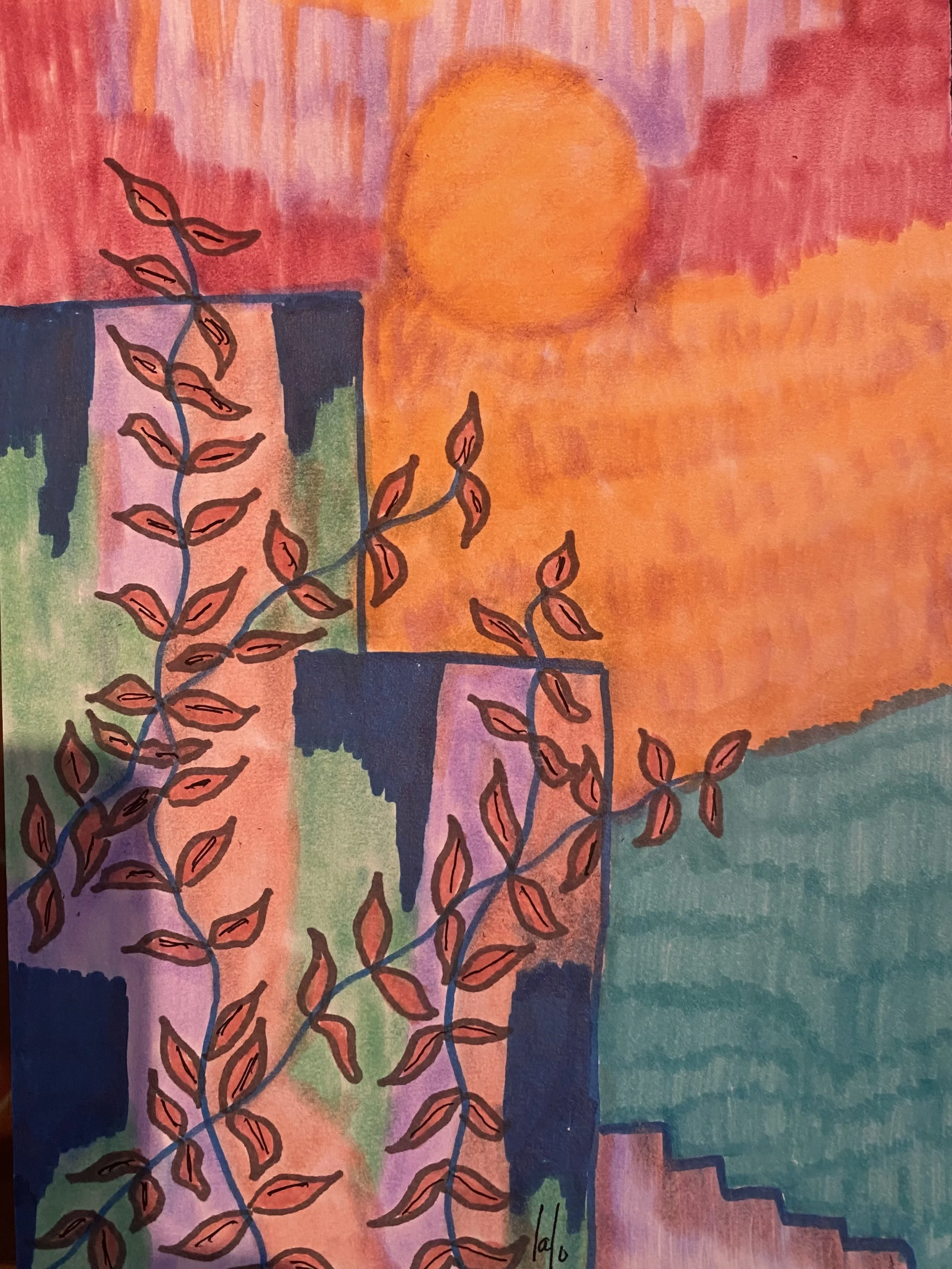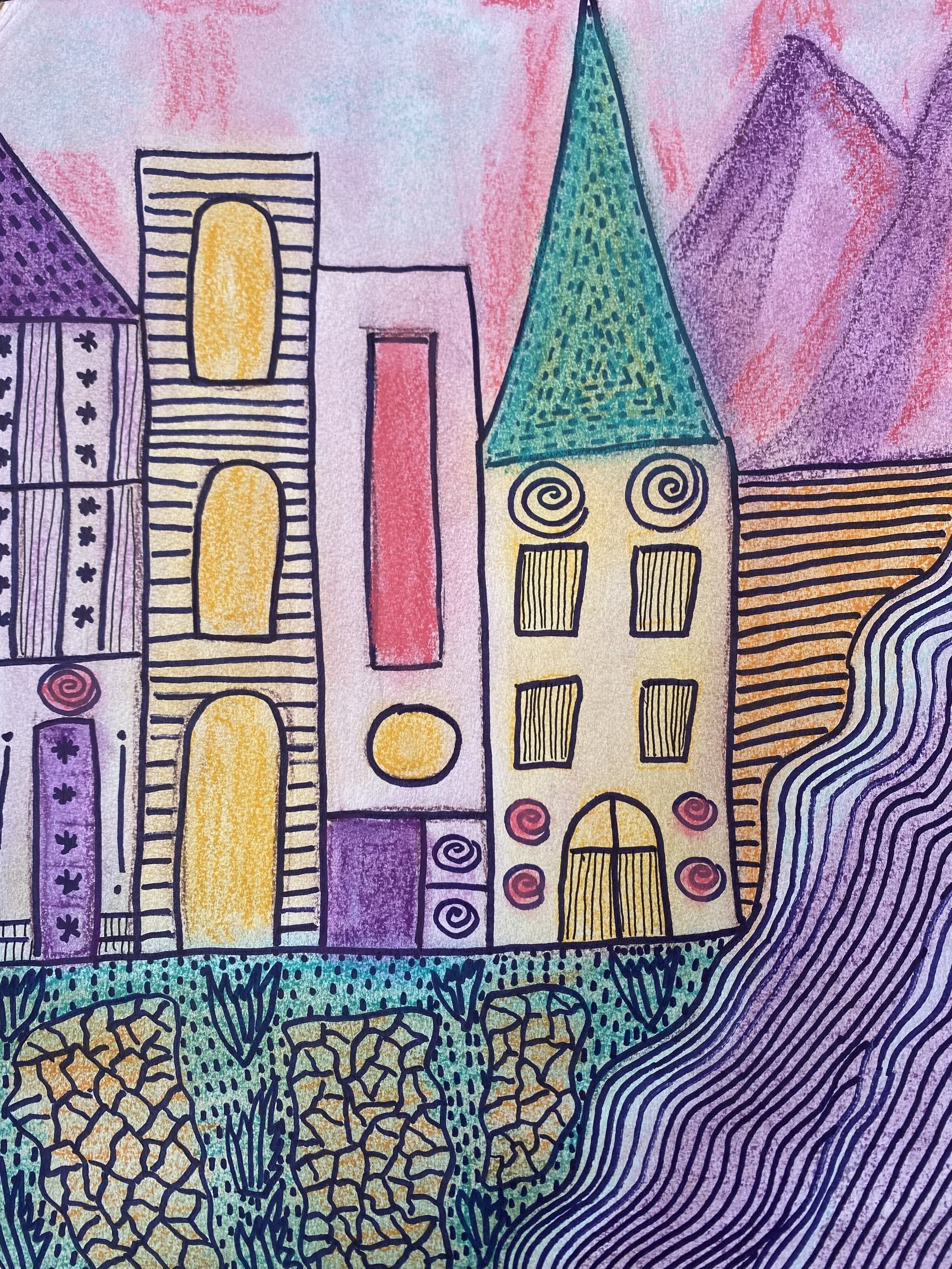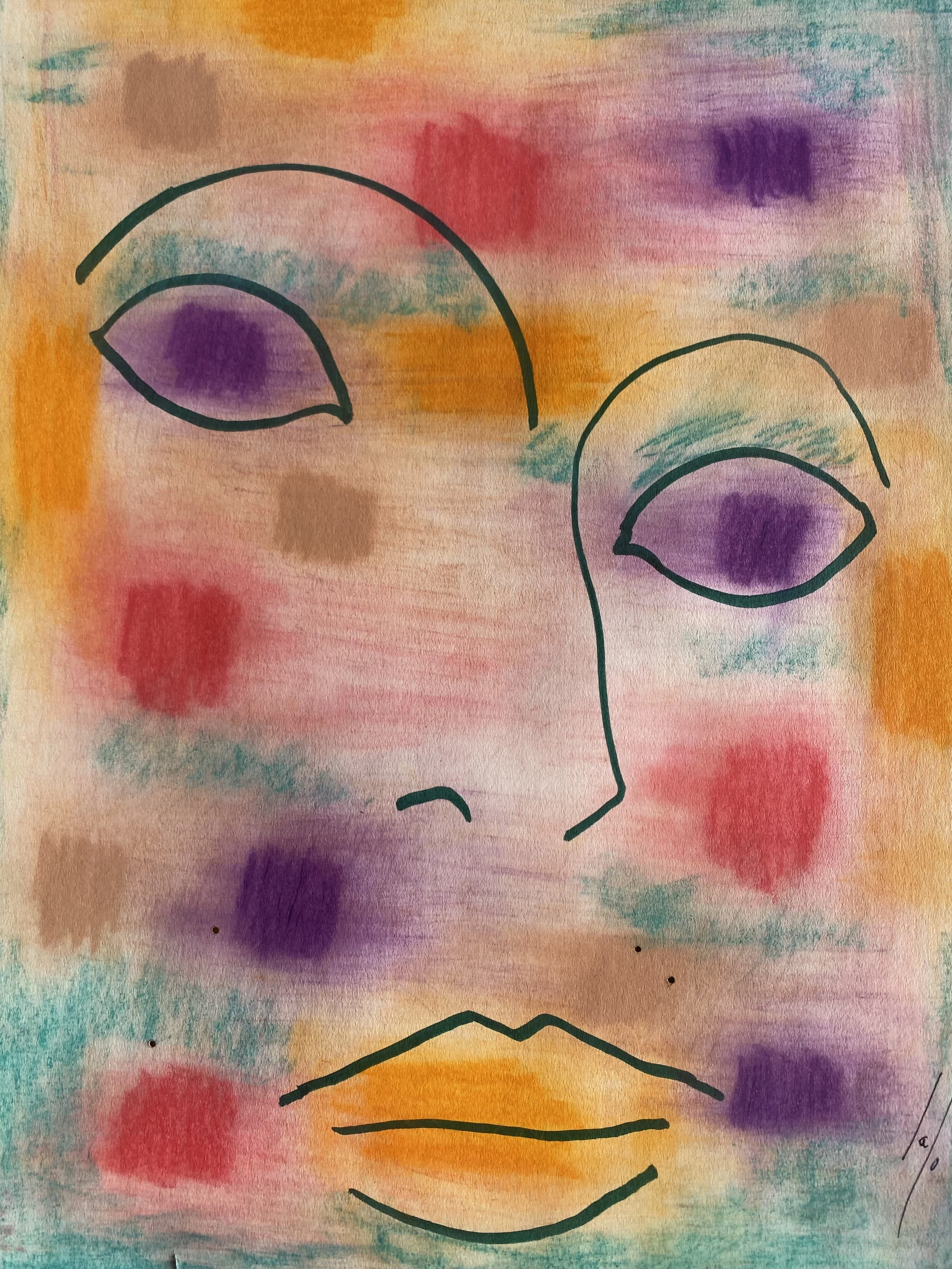“Street Wisdom” & the Broken Heart
“Street Wisdom” & the Broken Heart
It was a warm, late summer afternoon in southern France. The heat could have made me drowsy in the old stone house where we were gathered, but my spiritual teacher was answering questions with candor, and his presence sparked a kind of bright attention in the space that carried me along. A somber young man raised his hand.
“You talk about the broken heart a lot. You’ve said that, on the path, we must have a broken heart that only God can heal. What do you mean?”
Silence spread across the room. Moments ticked by, accentuating the contrast between the stirring depths of the question and the golden afternoon outside, where trees were crowned in green glory and flowers overflowed their pots to adorn the bridge across the river. There was compassion in Lee’s voice when he began to speak.
“There is a difference between the broken heart and ordinary angst. We can very easily be depressed and brought down by the suffering in the world. The broken heart that I speak of is a heart of peace and understanding in relationship to the Divine. I call it the ‘broken heart’ because it encompasses the suffering in the world, but the relationship to that suffering is one of inspiration. We are naturally turned toward doing whatever we can to relieve that suffering. We may still feel overwhelmed by the suffering in the world, but it doesn’t incapacitate us.”
Only a few days later, on September 11, 2001, the World Trade Center was destroyed and over 3,000 people were killed. Intense waves of outrage, sorrow, fear and grief reverberated around the world. On the ashram, quite hidden in the beautiful green countryside of central France, Lee gathered everyone together and informed us of the shocking act of terrorism. After he had relayed the facts, he said simply, “Now is the time to pray.”
Pray is what we did. Even miles away in Europe our days were accompanied by the broken heart. Two weeks later, back in the high desert of Arizona, the mood in the States was still raw and shaken. Outrage and grief seemed to float on the air. Lee spoke to his American students about staying open and not giving in to “middle class stodginess,” in which we shut down, close our eyes and harden our hearts. He said:
“We always need to come back to staying in touch with ‘the streets’—to have the edges a little rough and raw. We can celebrate, drink wine and enjoy fine desserts when we’re traveling in Europe, but we’ve always got to keep one foot on the streets. Within ourselves, we need to be vigilant about the tendency to sink into our middle-class complacency, to put middle class comforts before the Divine and the comfort of taking refuge in the Divine. If we don’t stay in touch with the streets, when insanity reigns, when things get dark, the streets will eat us up. When times get hard, we must be able to navigate whatever is happening.”
Wisdom of the “streets”—keeping it real
That was almost twenty-five years ago. Today, Lee’s words help me navigate the swirl of events in 2025. I’ve shared this teaching many times with others, and recently a friend asked me, “What do you think Lee meant by ‘the streets’?” His question fueled an impulse to sit down and write about it.
For me, “the streets” is an earthy, working metaphor that gives us another way of looking at the contexts, attitudes and practices of Tantra. Street wisdom teaches us to navigate and live with all kinds of edgy, threatening conditions and unknowns in daily life. Being “in the streets” means that we are keeping it Real.
Tantra is about seeing beyond the surface, going deeper into the heart of the matter. Tantra is sharp as a razor. It’s called a razor’s edge because tantra suspends us in the many permutations of the betwixt and between, as the Celts say—between conflict and peace, fear and faith, emptiness and fullness, being and becoming, self and community, the many and the one, to name a few. Tantra teaches us how to traverse liminal times by cultivating the supreme skill of paying attention, gathering attention and intention, and seeing what is clearly.
In the very real reality of day-to-day life, street wisdom teaches us how to work with liminal situations, intense feelings and difficult emotions as we hold the tension of the pairs of opposites that we call duality—the world in which we live. Staying with the tension of right and wrong, joy and sorrow, fear and faith, or certainty and uncertainty, there is a transformative magic that happens. Somehow the staying power of our open attention—without rejecting, identifying or getting lost in either of the polarities—opens an inner doorway to inspiration that may bring a joyful participation in what is.
Being wise on the streets of Life means that our eyes and our hearts are open to allow free attention to flow. Inner work is necessary. We are called to muster the courage to be grounded, alert, present. By developing this capacity, we come to know ourselves from the inside out as we learn the art of finding the gold within shadow and deep darkness. We become truth tellers of integrity and heart. A certain savvy and vigilance are necessary—we are not easily fooled by illusory appearances, including our own. We know what we value and intend. We’re vulnerable and honest about our own foibles and personal shadow as well as compassionate and forgiving with ourselves and therefore with others.
Paying careful attention and seeing clearly strengthens our ability to persevere in practical ways, to be fluid and resilient, to focus with clarity, to know what is real and what is unreal; to act spontaneously with right intention in the demands of the moment. Paying attention and gathering attention is essential to cultivating each day and every ordinary circumstance as our sacred path toward direct experience of divinity, which brings insight, revelation and inspiration.
When we have a broken heart, it is a wound that only God can heal. Crafting such a capacity to be fully alive and functional here and now does not mean that tragedy and heart break will not visit us; it means that as we live fully whatever life brings, we discover the simplicity of sahaja—the innate wisdom and presence of our own natural being. Sahaja is discovered in moments of sheer grace, when we are lifted through and beyond happiness or sadness into wholeness. Tantra crafts an inner state of being that helps us to dance lightly between nonduality and an enlightened duality...between overwhelm and inspiration.
Now is the time to pray
There are many ways to pray. We may weep tears in our prayers or struggle with God over the conditions and suffering in our personal lives and in the world. We may pray through creative acts, singing, drawing, cooking, working, walking and sitting still. The great traditions all hint at a secret—that the most powerful prayer is inspiration and praise. This is the secret hallelujah, for prayers of praise are lifted on the wings of inspiration.
All forms of prayer need both the clarity, intention and focus that comes from tantric practice and the qualities of bhakti, the path of the heart, that cultivates gratitude, humility, compassion, courage and letting go. Woven together in the contemplative life, the marriage of these qualities give birth to wonder, awe and freedom.
As soon as the heart comes into play, we are in the field of bhakti or the devotional path. We may have an idea that bhakti practice is soft, easy, or that all the chanting and ritual is just for bliss bunnies. In my experience, bhakti is not an easy path at all, especially when bhakti is interwoven with the dynamic power of tantra. On the loom of devotional tantra, the practice of bhakti may invoke nectars (moods) of many flavors and tastes, but these too require the ultimate from us, giving rise to heartbreak and purification at many levels of depth. Love inundates us with water and burns us with fire—forces that dissolve or incinerate illusion and make fierce demands upon our courage. Bhakti reminds us constantly that now is the time to pray. Tantra gives us the clarity and courage to do so.
Both tantra and bhakti require commitment, discipline, contemplation. Both are fueled by an inner fire, an inner flame. Both will bring us to our knees. Both will purify the dross within. We may wrestle with God, cry out: How many times, Great Mother? As many as it takes, comes the answer. This too, is humbling.
Though we must surely do our part, we are also infinitesimally small and helpless creatures in the grandeur of Life, moved by the Great Process of Divine Evolution. As Krishna tells Arjuna in the Bhagavad Gita, “I am the Doer of all things.” All action is made by the Supreme Reality—and yet, we do seem to choose. We are given an inexplicable agency as free beings that paradoxically demands choice. We must act, and every choice we make is a signal to the Universe that says, “I am.”
Works in progress
Every spiritual path offers many ways and means for cultivating the inner moods and qualities that transform our hearts and minds. The inspired path of tantra and bhakti asks me to be “in the streets” with whatever Life brings to me, as it is. Here I am, an ongoing work in progress, embedded in my body and its existence, its karma, suffering, pains and aging. I can only see a tiny swath of what is going on. Each day offers doorways into greater awareness, sanctuary, compassion, a way forward. The path puts me into circumstances and experiences that break me open, expand my view until I glimpse the bigger pattern, the vast, sweeping arc of the evolution of human consciousness, the ocean of existence.
When my mind and body are not in sync with the feeling intelligence of the heart, the extremes of the opposites become terrifying and full of shadow. Take fear and faith, for example. Fear is thick with dread, horror, despair, or blame. When we refuse and deny the fact that we are feeling fear, it becomes a pent-up emotion that calcifies, hardens like dry mud. Then its opposite—faith—will also be in shadow, becoming calcified as blind faith, faith as a buffer against Reality. Blind faith is distinctly different from a living moving, evolving faith. Blind faith can become a defense mechanism. It has an escapist quality of wishful thinking; it can render me powerless to stay in touch with the streets, with my own innate wisdom. When I’m bound, I am unable to live fluidly with Reality as it is. When faith is a living flame of trust and surrender, the soul is set free to fly in vast expanses of Mystery.
It seems counterintuitive to work in this way: that when we allow ourselves the very natural feeling of fear or horror when it arises and give the emotion it’s full play—without acting on it and simply staying present—then it will pass through in the flow of life, fertilizing our inner world in a mysterious way that nourishes the flame of a true faith, which also comes in waves and flows. Most of us will experience those fluctuationsas an ongoing dance of Life.
Witnessing how this process works in myself over a lifetime has tenderized me, opened my heart and eyes and provided fuel for the Broken Heart as Lee spoke of it. This big picture view also strengthens me, gives me the inspiration, vision and courage to live into the wild and unpredictable turns of the Path. The magic of the path can take sudden turns and twists of fate that can be terrible, fearsome and full of loss. Such unexpected shocks have worked intimately with the very ground of my human limitations and karmas; they have shattered concepts and the stony defense of my heart, thrown me into a fire of purification, destroyed past forms to make way for renewal and rebirth.
If we avoid our own inner work, we can get lost in the suffering of the world. Though we must look and see clearly what is happening in our world, when we stare at it for too long, we are infected by its toxic glare. There is street wisdom in knowing how much to take in—just enough—and leave the rest. This arduous walk along the razor’s edge of tantra in our times is as old as the mountains themselves. It is found at the roots of traditional contemplative practices, of the devotional paths and the nondual realizations of the ancients. And yet, the opportunity and calling of our times is unique and unprecedented in human history as we know it.
Of course, our broken hearts don’t feel so noble and free in the middle of it all. It’s more like a storm or a wildfire raging out of control. Usually, it is only in retrospect that we can see the events of our lives as the “Hand of God,” the “Hand of Mother Universe,” or “the Guru’s Grace.” When we bow down in humility, trust, and simplicity, accepting “not what should be but what is,” knowing that now is the time to pray, we may glimpse the Big Picture, what Lee called the Great Process of Divine Evolution. Then, we can be grateful for the lessons, grateful for the struggle. Then the inspiration of the Broken Heart flows to bathe us in wonderment and gladness, giving rise to inner peace and a flood of praise.
Dia
June 25, 2025
Art by Sam Edwards


